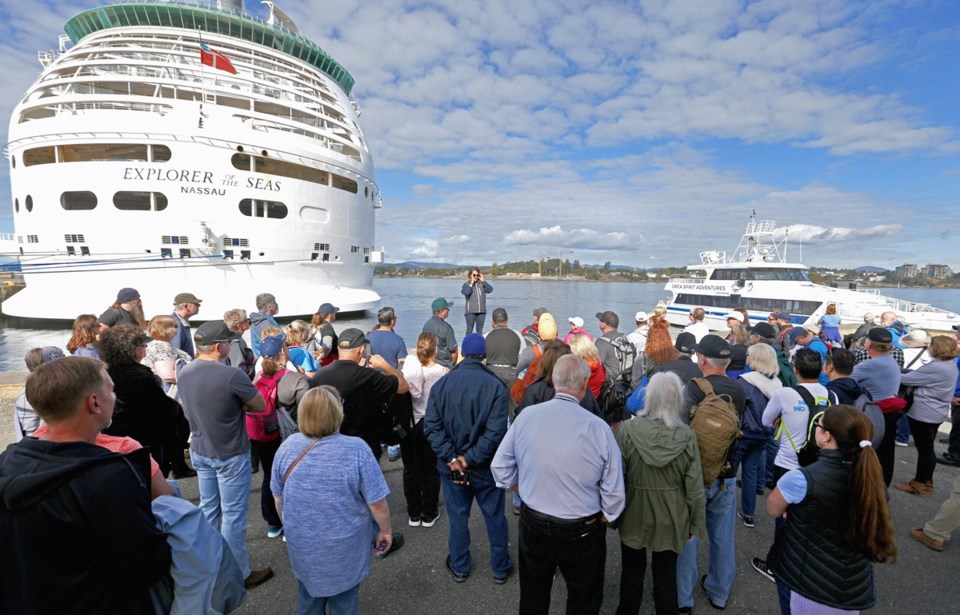Greater Victoria’s tourism industry continued to hum through September and its performance through three fiscal quarters this year is reminding industry insiders of the late 1990s before the 2001 terrorist attacks altered travel patterns.
Victoria area hotels reported another strong month in September, pushing year-to-date average occupancy to 77.83 per cent, versus 77.12 in the same period last year. At the same time, revenue per available room jumped $12.02 to $148.18, and the average daily room rate hit $190.
Tourism industry consultant Frank Bourree said the occupancy level is a record, though he noted it’s a very different situation to that of the late 1990s. “It’s different because we have 1,100 fewer hotel rooms in Victoria, but we do have 1,500 Airbnb rooms now, so it’s different, but close to the same formula,” said the principal of Chemistry Consulting.
Paul Nursey, chief executive of Destination Greater Victoria, said it is starting to feel very much like the late 1990s in terms of industry performance.
“We keep hearing that the late ’90s was the peak, and it does feel a lot like that, but the customer has changed and there are different source markets,” Nursey said.
He said there is less mass tourism — big tour groups going from attraction to attraction — and more small groups seeking individualized experiences. “It’s about experiential tourism, people love to experience the taste and texture and feel of a city,” he said.
And they have done it in massive numbers this year in Greater Victoria.
B.C. Ferries saw a 2.49 per cent increase in passengers and two per cent jump in vehicle traffic on its largest route, between Swartz Bay and Tsawwassen, through to the end of September.
And Victoria International Airport reported a 6.6 per cent jump to 6.06 million passengers through its gates this year.
Victoria also saw a record cruise ship season in 2018 with nearly 640,000 passengers and 260,000 crew on 250 ship visits.
That translates into an estimated $130 million in economic impact for the region, according to the Greater Victoria Harbour Authority.
Last year the city welcomed a then-record 239 calls by cruise ships, with almost 600,000 passengers and just over 239,000 crew visiting the city between April and October.
“It really feels like our plans have come together over the past number of years where we have multiple segments of the industry performing at the same time,” said Nursey.
“There are now only four or five months where we were below 70 per cent occupancy and I remember in 2013 we ended the year with 64 per cent year round. So we have come a long way.”
But he said the industry has to remain focused and build on the last few years. “First off, we have to protect what we built. We can’t take that for granted,” he said. That means remaining vigilant in terms of public policy and ensuring there’s government support.
He said the industry needs to focus new effort on the off-season — November through January — with particular attention on attracting more conference business and sports tourism. “We think we can have a couple more engines going,” he said.
The strength of the industry, high occupancy and high room rates has led to speculation about new hotels.
Bourree said there are several irons in the fire, including rumours of expansion at some existing properties and new buildings in Saanich and downtown Victoria. “Any time you achieve more than 70 per cent occupancy it’s time [to build],” he said.
Bourree noted final decisions on new rooms have been held up by increased construction costs and availability of suitable land.



